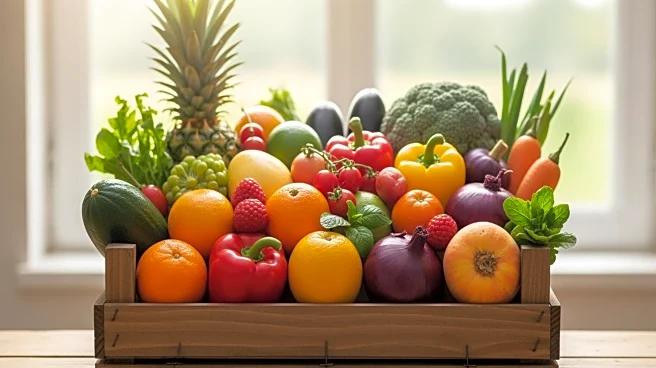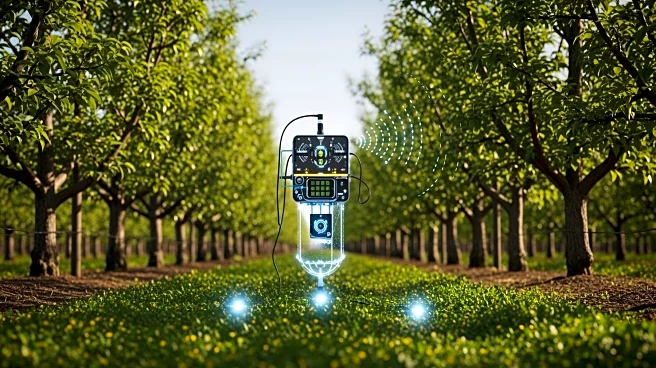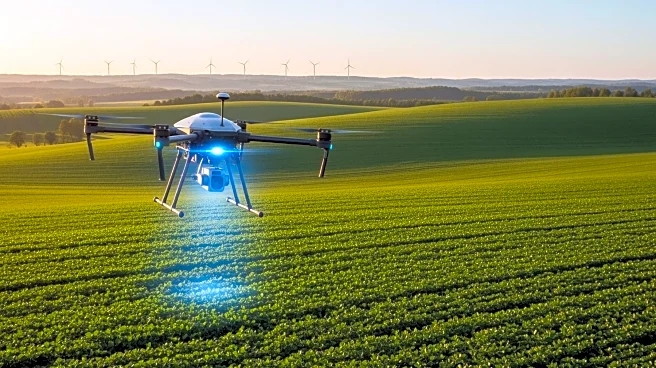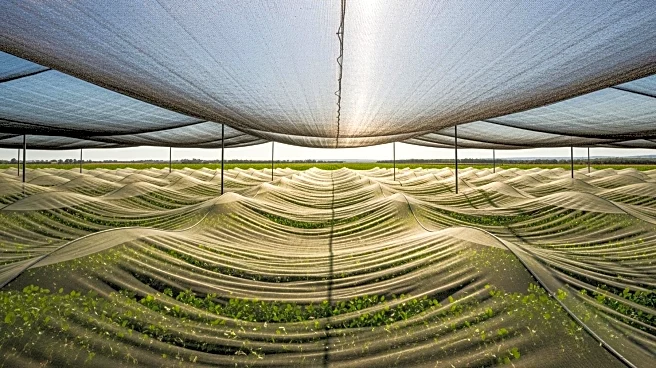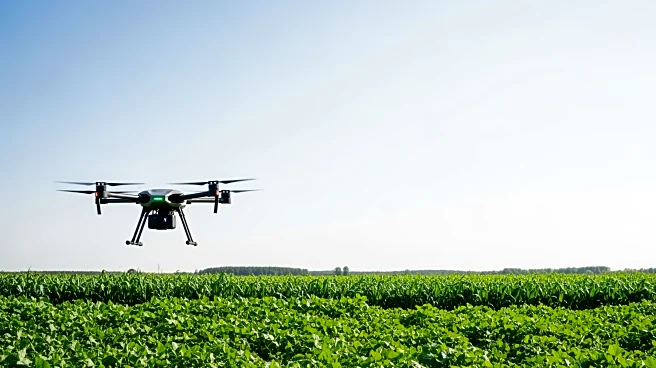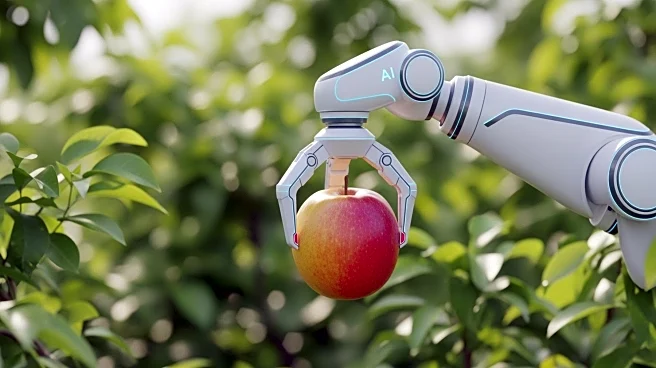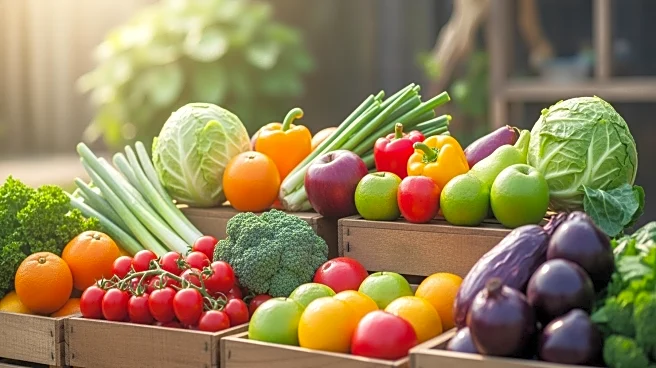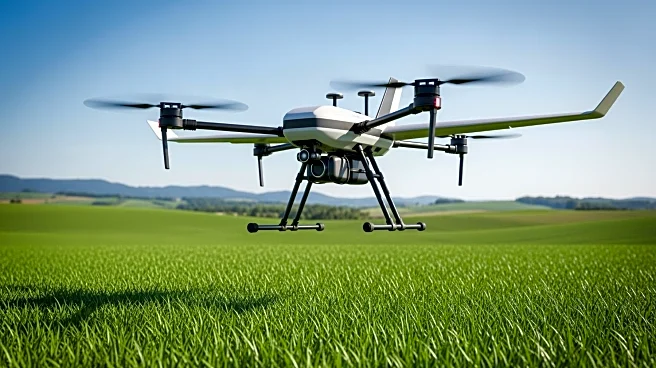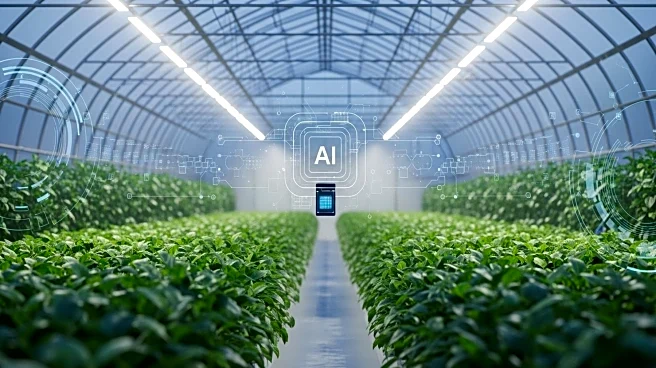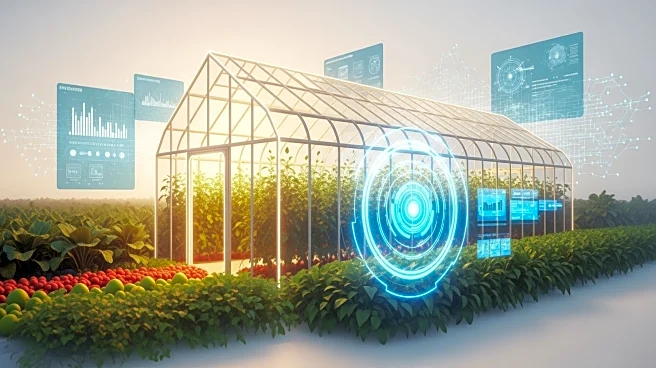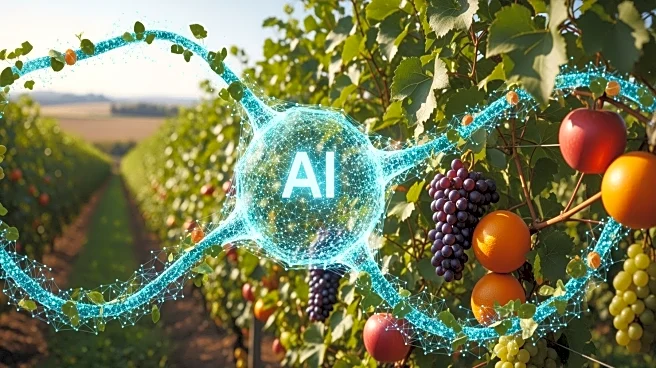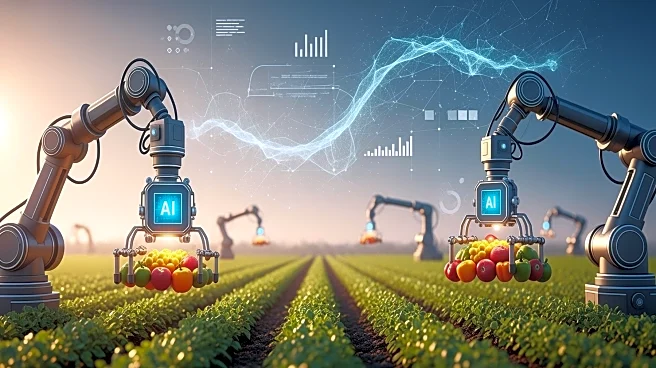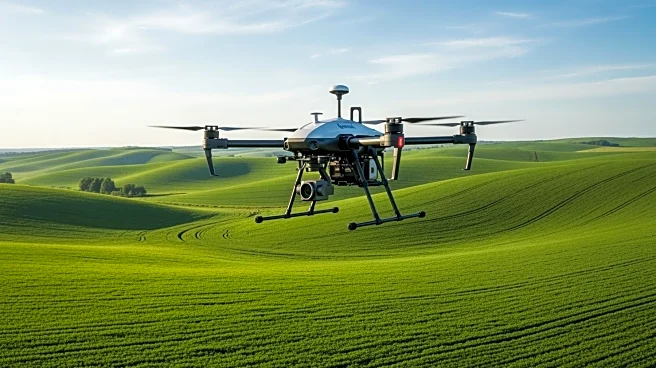What's Happening?
The agricultural food loss reduction solutions market is projected to grow from $14.5 billion in 2025 to $22.5 billion by 2030, with a compound annual growth rate of 9.2%. This growth is driven by increasing concerns over food security, sustainability,
and resource efficiency. The market is seeing significant investments in advanced cold chain logistics, improved storage and packaging, precision agriculture, and AI-enabled inventory management. Developing regions are experiencing technological interventions to address food loss due to poor infrastructure, while developed economies are enhancing automation and digital platforms to optimize food distribution. Despite the growth potential, challenges such as high capital costs, limited adoption among smallholder farmers, and fragmented supply chains remain.
Why It's Important?
The expansion of the agricultural food loss reduction market is crucial for addressing global food security and sustainability challenges. With nearly one-third of global food production lost or wasted, these solutions can significantly reduce waste and improve food availability. The market's growth is likely to benefit stakeholders across the agri-tech and supply chain industries, including technology providers, farmers, and governments. However, the high costs and infrastructure gaps in emerging markets could limit the adoption of these technologies, potentially widening the gap between developed and developing regions in terms of food security and technological advancement.
What's Next?
As the market grows, stakeholders are expected to focus on overcoming barriers such as high initial investment costs and infrastructure gaps. There will likely be increased collaboration between governments, private sectors, and international organizations to enhance technology adoption and infrastructure development. The focus will also be on developing cost-effective solutions tailored to smallholder farmers and emerging markets. Additionally, advancements in AI and sensor-based technologies are expected to play a significant role in optimizing food loss reduction strategies, potentially leading to more efficient and sustainable agricultural practices globally.
Beyond the Headlines
The push for agricultural food loss reduction solutions highlights broader ethical and environmental considerations. Reducing food waste aligns with global sustainability goals and can contribute to reducing greenhouse gas emissions associated with food production and waste. The integration of AI and digital technologies in agriculture also raises questions about data privacy, the digital divide, and the need for regulatory frameworks to ensure equitable access and use of these technologies. As the market evolves, these issues will need to be addressed to ensure that technological advancements benefit all stakeholders equitably.
